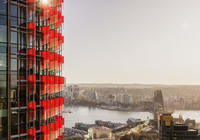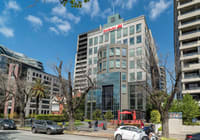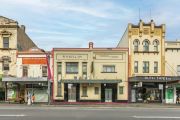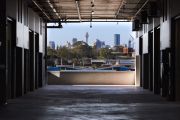
Too many boats, not enough berths. Why marinas are hot property
Yacht marinas are proving to be lucrative investments as the demand for berths grows from Australians becoming wealthier and their boats getting bigger, coupled with constraints on the development of new facilities.
Demand is rapidly outpacing supply on Sydney Harbour, which has the highest concentration of yachts during summer, but is largely locked out from further development.

David Good, chief executive of Superyacht Australia, the peak body representing the Australian super yacht industry, said Sydney Harbour was probably one of the most difficult places in the world to develop marinas.
“There just hasn’t really been that much waterfront released. There always seems to be a reluctance to develop waterfront,” Good told The Australian Financial Review.
“I started in 2005 so it’s 20 years ago, and there was a waitlist for 10 and 12 metre berths and we had stacks of 15s and 18s. Then when I left the marina industry in 2018, there was a wait list for vessels above 30 metres.”
He added that every time Maritimo Luxury Motor Yachts and Riviera Australia – two of Australia’s largest yacht providers – released a larger vessel, they sold out quickly – but there weren’t enough spots to berth them.
“We can see into the future because we know what’s on the order books for the next three years. Talking vessels over 24 metres, last year was the largest amount of deliveries ever made in history.”
Alternative asset manager MA Financial is taking advantage of the growing demand for berths, having launched a fund two years ago offering investors exposure into d’Albora Marinas.
With 15 marinas along the east coast and a capacity to accommodate about 3,400 vessels, it’s the largest marina group in the Southern Hemisphere with facilities along the east coast.
The fund was targeting an internal rate of return above 13 per cent. Brad Couper, managing director at MA Financial, said it was tracking at 18 per cent per annum since it’s launch, without taking into account any potential capitalisation rate compression.
“Definitely COVID has been an accelerator I think, in terms of wealth accumulation, and certainly in terms of the catalyst for a lot of bigger boats arriving down here,” Couper told the Financial Review.
“It’s a very supply constrained sector. It’s very hard to get approvals for expansions or new marinas. There’s a range of environmental considerations and consent requirements and just generally, a lack of locations.
“Pretty much all the marinas are still sitting at record occupancy levels.”
Peter Moxham has managed marinas for more than 25 years and is the NSW regional manager at d’Albora Marinas.
When he began in the industry, he said the biggest berths were 15 to 18 metres, whereas now, they had berths up to 40 metres – of all of which were full.
“The demand in vessel size and demand in the higher, bigger berths has certainly put some strain on our infrastructure and waitlist,” Moxham said. “If we could double the size of Rushcutters Bay, we would probably fill it … and Mosman, because of the affluent area we’re in.
“Vessels are getting bigger, and the ownership of vessels [is] getting bigger.”
Brock Rodwell, chief executive at Ray White Marine, said the industry had grown exponentially post-COVID-19, especially in Sydney.
“Sydney Harbour being our main market, it’s extremely hard to get approvals for long-term leases from existing marinas,” Rodwell said.
“Jones Bay Wharf, it’s called the ‘super yacht wharf’ now because they’ve had to reconfigure that recently just to accommodate large yachts.”
Ray White Marine will also be offering 25-year leases at the new marina in Sydney’s inner-west, Corsa Mortlake Marina. Berths range from 12 to 20 metres, and will cost about $585,000 to $980,000, respectively.
There’s also a residential offering from developer Made Property, with 20 three-bedroom apartments for sale. Apartment buyers will have the first right to purchase a berth.
“We’ve transacted maybe four berths there, and then they’ve gone up in value basically just because of the shortage of berths available,” he said.
“We generally don’t have to advertise quite heavily, they usually either get snapped up internally or by word of mouth through our database.”
Similarly, billionaire and pub baron Bruce Mathieson and development partner Tim Gordon, chief executive of Gordon Corp, are in the midst of developing a $300 million residential and marina project at Southport Spit on the Gold Coast.
Scheduled to be completed by April 2026, the Mantaray Marina and Residences will feature a 67-berth super yacht marina with berths up to 60 metres, resort facilities and 24 luxury apartments.
Several berths have been purchased by apartment owners already, with the rest going to the open market at the end of this year before the project’s completion.
“I’ve put my hand up for one, because I can just see the positioning of the marina and the quality of service that they’re going to provide,” Rodwell said.
“People really want what you get in the Mediterranean and Florida et cetera, there’s nothing really like that in Australia yet.
“My clients are just always complaining when they come back from the European summer that we just don’t have the same facilities here.”











